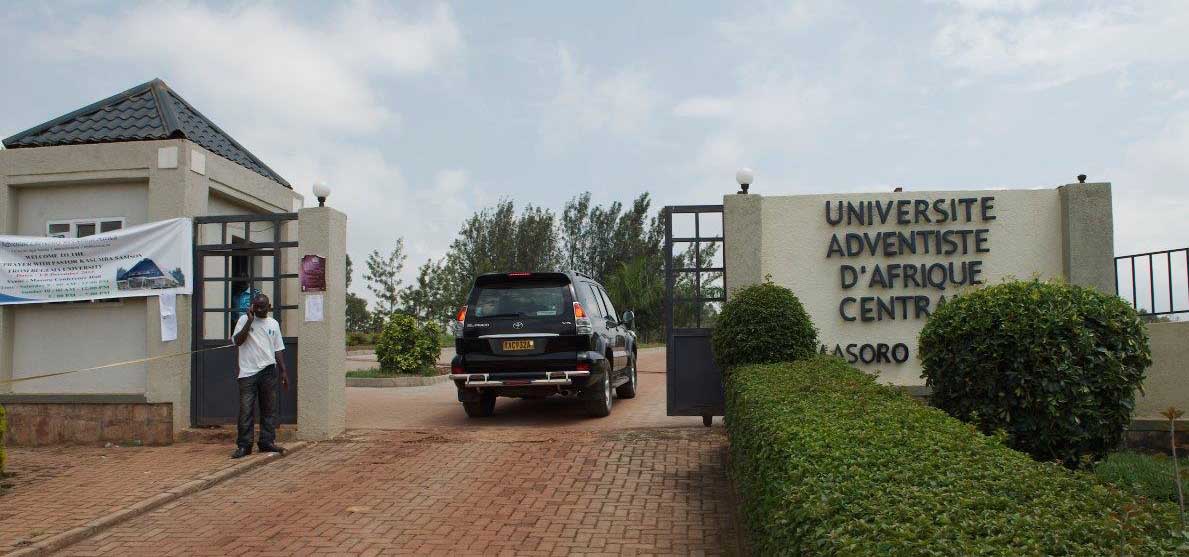
BY CLAUDE RICHLI
In its
May 12, 1994, edition,
Adventist Review
reported how United Nations troops helped evacuate more than 200 foreign
students from 18 African and European countries from the Adventist University
of Central Africa (AUCA).
1 The church was also employing more than 70 expatriate teachers and staff from
all over the world. They, along with the students, were evacuated to Goma, just
across the border from Rwanda, a few downhill miles away. The
Review’s report tells how “Elizabeth
Liénard, the pregnant wife of AUCA biology teacher Jean-Luc, went into labor
before the evacuation started. Being notified of Elizabeth’s condition, a
Belgian doctor from neighboring Zaire met the evacuation convoy at the border
and was able to take Elizabeth into Zaire ahead of the others.” Both baby and
mother survived the ordeal.
That
birth, in the midst of chaos and bloodshed, surely must have served as a promise
that although all appeared to be lost, God still would make a way to a brighter
future. But it took time.

About
two years later, at the initiative of the rector, Robert Pierson, the
university reopened its doors on a small campus called Gashushu on the
outskirts of Kigali. That campus could hardly pass for a university: two small
buildings with a flagpole in the middle, a couple of 40-foot containers to
store supplies, and a tiny library. It was roughly the size of a typical African
elementary school. Then in 2001, Jozsef Szilvasi and his wife, Szusana, arrived
to provide new leadership in the face of great adversity, including threats on
their lives. An additional property was acquired in 2004 from the city of
Kigali on a hill across from the international airport, with funds obtained through
a settlement with the United Nations High Commission for Refugees (UNHCR) for
the use of Mudende as a refugee camp.
Abel
Sebahashyi, a Rwandan native, returned to the university in 1996 after serving
for a couple of years as an administrator with Médecins sans Frontières, a
well-known non-governmental organization (NGO) that supplies medical services
during humanitarian crises. Today, Sebahashyi is the vice chancellor of AUCA.
When asked what lessons he learned during that time, he says: “I have recognized
that patience is something extremely important, and that the more difficult the
situation, the more opportunities it offers.”
And
indeed, the opportunities are great. At the time of the genocide, the church’s vision
for the university was essentially to prepare “workers” for the French-speaking
fields in Africa. Vital as this task is, it is dwarfed by the opportunity the
church has today to train not only workers but also the elite of the Rwandese
nation. Where there were 300 students yesterday, today there are 3,200—and enrollment
is still growing. The students study business administration, information
technology, education, and theology. Specialty programs in education
(mathematics, economics, science, geography, computer science, and history)
will soon be added. In addition, at the government’s request, in 2015 AUCA will
also add medical courses. It will be the first university in the country to
offer medical training; indeed, in the whole central Africa region. Two
campuses will make this possible: Masoro Hill and Gashushu, where right now a
brand new building of almost 50,000 square feet (5,000 square meters) is going
up under the vigilant gaze of Dominique Pagarigan, the church-employed
architect from the Philippines.
2
Of the
3,200 students, 55 percent are not Adventist, as are about 20 percent of the
professors. But according to Sebahashyi, “Our philosophy is getting their
attention more and more. When they go to other institutions, they can see the
difference. Over there, there is no discipline, sloppy attendance, large
classes where they have to teach with a megaphone. Even the government is now
saying that our system is better. One day, Sangimana, the minister for
education, came to give a lecture. Noticing how quiet our students were, he told
me, “In our cabinet meetings we often talk about your university, and we ask
ourselves how you manage to have students who are calm and disciplined, when in
other universities they shout and swear.”When Sebahashyi told him that they begin each day with prayer, Scripture
reading, and a song, as well as conduct Sabbath and chapel services every week along
with religion classes, the minister exclaimed: “How come we didn’t think of
that?” As a result of this type of program, Sebahashyi says, “banks, insurance
companies, government agencies, and employers in general testify that our
graduates are different: they are punctual and committed to their work. And so
people ask, ‘What is your secret?’”